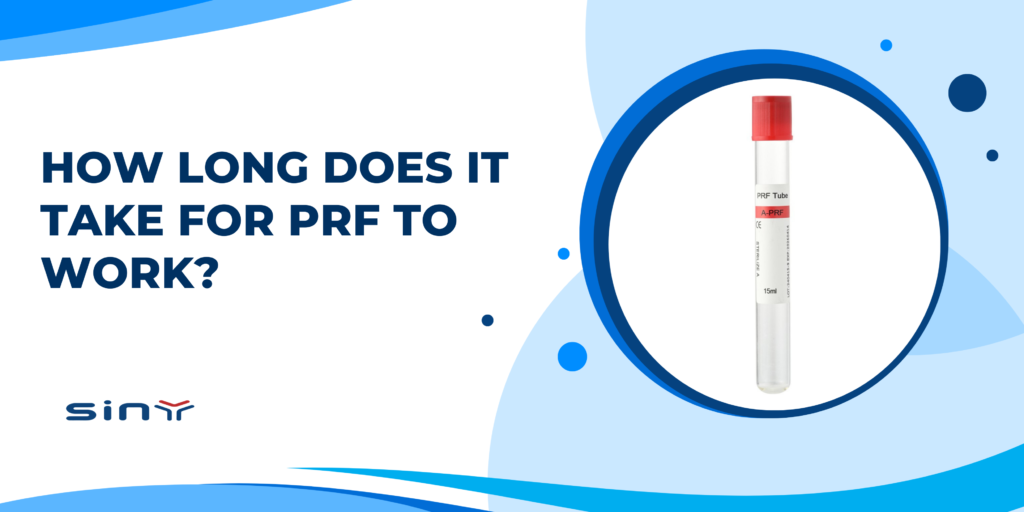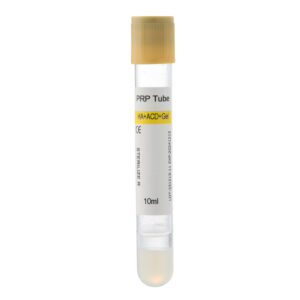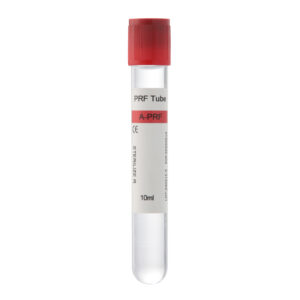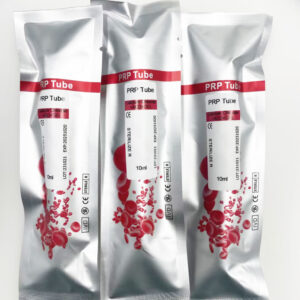How Long Does It Take for PRF to Work? For any patient considering Platelet-Rich Fibrin (PRF) treatment, the question “How long until I see results?” is undoubtedly a top concern. It is crucial to understand that PRF is not an instant dermal filler but rather a bioregenerative therapy that harnesses the body’s own healing capabilities. Its effects are gradual and require time to become apparent. This article provides a detailed, science-based timeline of results to help you set realistic expectations.
What is PRF and How Does It Work?
Platelet-Rich Fibrin (PRF) is a 100% autologous biological agent derived from the patient’s own blood. Through a specific centrifugation process, a fibrin matrix rich in platelets, white blood cells, stem cells, and growth factors is isolated from the blood.
Its core mechanism of action is as follows:
- Sustained Release of Growth Factors: When PRF is injected into the treatment area, its three-dimensional fibrin network forms a biological scaffold that supports the sustained release of growth factors. Over a period of 7-10 days, this scaffold slowly and continuously releases a high concentration of growth factors.
- Initiation of Tissue Regeneration: These growth factors act as signaling molecules that activate and guide the body’s own repair mechanisms. They potently stimulate fibroblasts to produce new collagen and elastin, promote the formation of new blood vessels (angiogenesis), and attract stem cells to the treatment site, thereby achieving tissue repair and regeneration.
Because this is a biological process that mobilizes the body’s own cells to perform regenerative work, rather than simple physical filling, the effects of PRF take time to manifest.
To explore more about PRF tubes, visit this category page.
The Detailed Timeline of PRF Results (Facial Rejuvenation Example)
The manifestation of PRF’s effects in facial rejuvenation applications can be broadly divided into the following stages:
- Immediately to Week 1: Minor Volumizing Effect & Biological Response Phase
- Immediately after the treatment, the injected area may exhibit slight swelling and a temporary sense of fullness due to the injected PRF fluid. This is not the final tissue regeneration result and will subside as the fluid is absorbed. During this phase, the PRF matrix begins releasing growth factors, initiating the repair process at a cellular level.
- Week 2 to Week 4: Initial Texture Improvement Phase
- As growth factors continue to work, the skin’s metabolism and microcirculation begin to improve. Some patients may start to notice preliminary changes in skin texture at this stage, such as enhanced skin radiance and a smoother feel.
- Month 1 to Month 3: Significant Collagen Synthesis Phase
- This is the stage where results start to become more distinct. Under the continuous stimulation of growth factors, fibroblasts are heavily activated and begin synthesizing new collagen. Patients will typically observe more significant changes during this period, including:
- Fading of fine lines and superficial wrinkles.
- An increase in skin firmness and elasticity.
- For areas like under-eye circles and tear troughs, an improvement in skin thickness and color.
- This is the stage where results start to become more distinct. Under the continuous stimulation of growth factors, fibroblasts are heavily activated and begin synthesizing new collagen. Patients will typically observe more significant changes during this period, including:
- Month 3 to Month 6: Peak Results and Stabilization Phase
- The newly formed collagen network gradually strengthens and matures, and the tissue regeneration effects reach their peak. At this point, the overall condition of the skin, including its firmness, elasticity, and thickness, will be at its optimal level for this treatment cycle. The rejuvenating effects of the treatment are now most prominent.
The Timeline of PRF Results in Hair Restoration
Due to the longer growth cycle of hair follicles, seeing results from PRF for hair loss treatment requires more patience.
- First 3 Months: Resting and Improvement Phase
- The initial goal is to improve the scalp’s microenvironment and nourish the follicles. The first thing patients may notice is a reduction in hair shedding.
- Months 3 to 6: New Growth Phase
- Some dormant hair follicles are reactivated and begin to produce new, fine, vellus hairs.
- After 6 Months: Significant Results Phase
- As the newly grown hairs become longer and thicker, the overall hair density and thickness will show visible improvement. The effects can continue to optimize for up to one year post-treatment.
Factors Influencing PRF Results and Treatment Recommendations
- Number of Treatments: A single PRF treatment can initiate the regenerative process, but for optimal and lasting results, a series of treatments is typically recommended. A standard protocol is 3 consecutive treatments, spaced 4-6 weeks apart.
- Individual Variation: Factors such as age, overall health status, metabolic rate, and lifestyle habits (e.g., smoking, sun exposure) will influence the cellular response and regeneration speed, thereby affecting the timeline and intensity of the results.
- Duration of Effects: After completing a full initial course of treatment, the effects of PRF typically last for 6 to 12 months. To maintain the desired state, periodic maintenance treatments (e.g., 1-2 times per year) are recommended based on your physician’s assessment.
If you’re curious about the latest designs, check out the PRF Tubes and the wide range of PRF tubes offered at sinymedical.com.
FAQs
Q1: Is the PRF treatment painful?
A: PRF treatment involves two main steps: a blood draw and injections. The blood draw is similar to a routine lab test. Before the injections, the practitioner will typically apply a topical numbing cream to the treatment area to minimize discomfort. Most patients describe the sensation during injection as a mild pinch or pressure, which is well-tolerated.
Q2: Is there any downtime after the treatment?
A: PRF treatment has minimal downtime. Following the procedure, you may experience mild redness, swelling, bruising, or tenderness at the injection sites. These are normal, temporary reactions that usually resolve on their own within a few hours to a few days. The vast majority of patients can return to their normal work and social activities immediately, simply needing to follow post-care instructions like avoiding strenuous exercise and high-heat environments for 24-48 hours.
Q3: Is PRF treatment safe? What are the side effects?
A: PRF treatment has an extremely high safety profile. Because it is derived entirely from your own blood and contains no external chemical additives, the risk of allergic or rejection reactions is eliminated. The most common side effects are limited to temporary redness, swelling, or bruising related to the injections themselves, all of which are self-limiting. The risk of serious complications is exceedingly low when performed by an experienced physician in a proper medical facility.
Q4: What is the key difference between PRF and PRP (Platelet-Rich Plasma)?
A: Both are derived from autologous blood, but PRF is considered an advancement over PRP. The main differences are:
- Preparation: PRF uses a lower centrifugation speed, which is gentler on the cells and allows for the preservation of more white blood cells, stem cells, and an intact fibrin matrix.
- Composition: PRF contains no anticoagulants, making it a 100% natural product. Its unique fibrin matrix allows for a slow and sustained release of growth factors over 7-10 days. In contrast, PRP requires anticoagulants, and its growth factors are released in a short, immediate burst.
- Mechanism: The sustained release of growth factors from PRF provides a longer and more efficient signaling cascade for tissue regeneration.
Q5: How long does the entire treatment session take?
A: From the time you arrive at the clinic to when you leave, the entire process typically takes about 45 to 60 minutes. This includes the initial consultation, blood draw, centrifugation of the blood (about 10-15 minutes), PRF preparation, and the final injection treatment.
Summary
In summary, PRF treatment is not about achieving an “instant fix” but focuses on long-term, natural tissue regeneration. Patients generally begin to notice distinct changes 1-2 months after treatment, with results reaching their peak at 3-6 months. It is a process that requires patience, but the reward is a natural and lasting rejuvenating effect that comes from within. A thorough consultation with your physician is essential before starting treatment to create a personalized plan and understand the results you can expect based on your individual condition.





